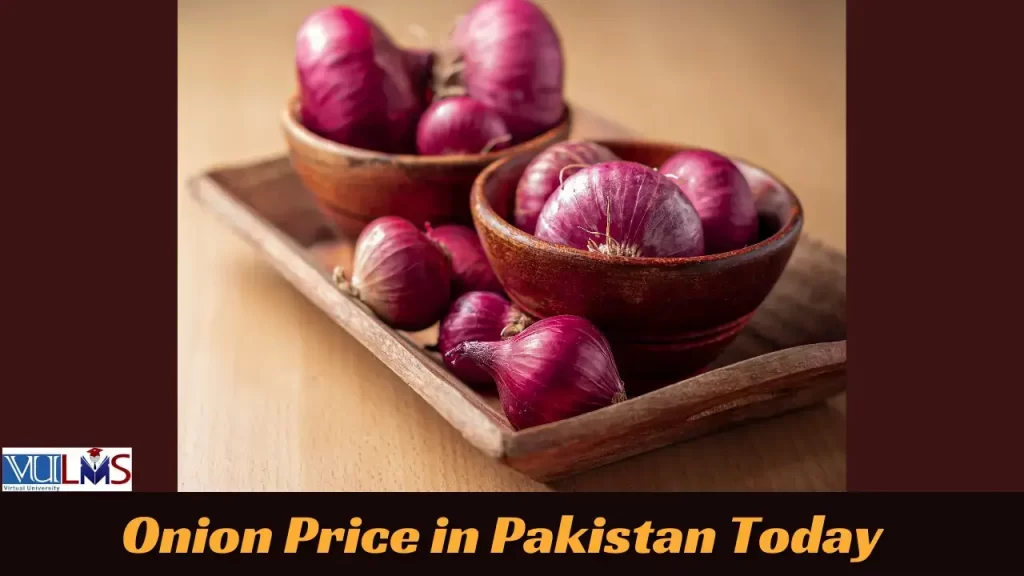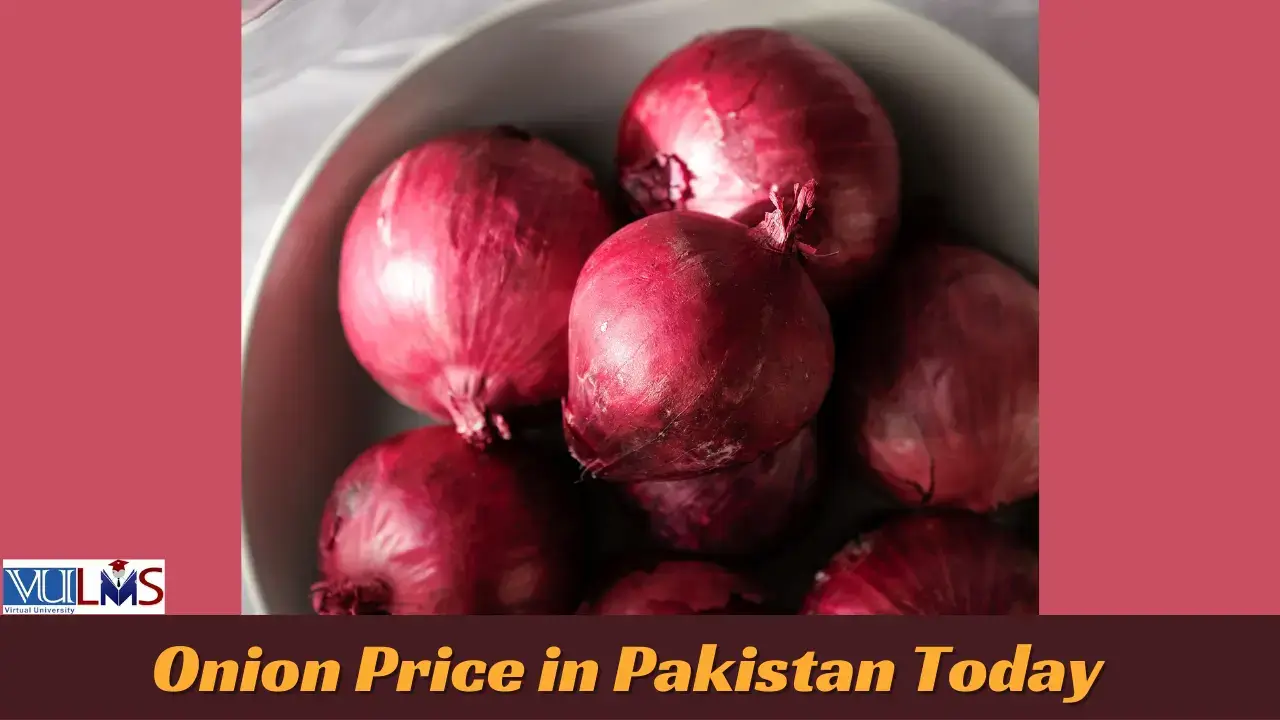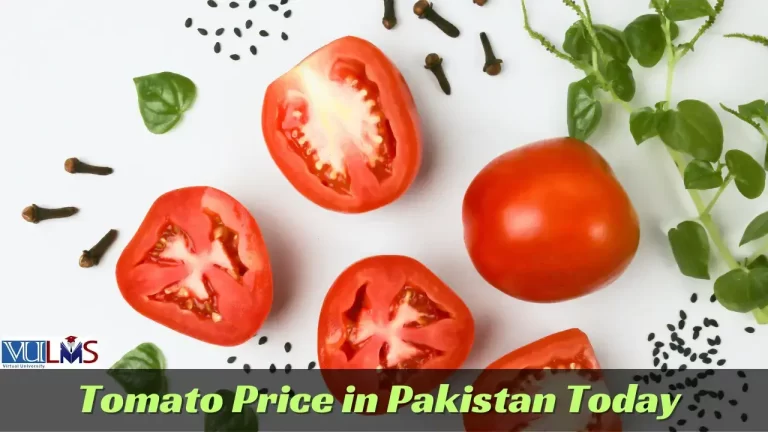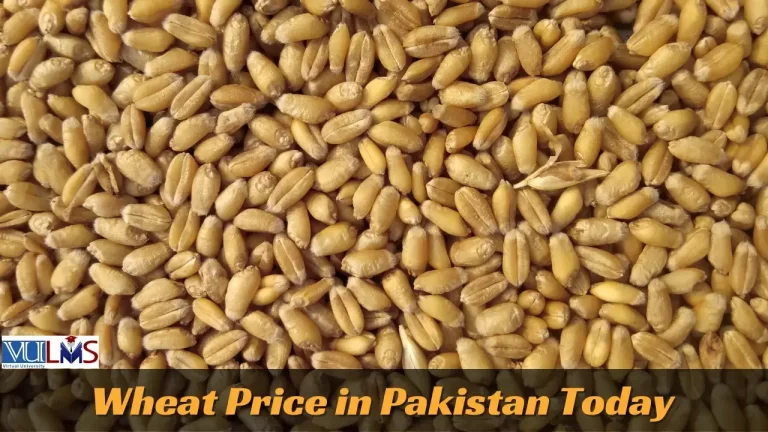Onion Price in Pakistan Today 2024 | Pyaz Latest Rate
Have you noticed the tightening of your budget during your recent trips to the grocery store? Wondering why that humble vegetable, the onion, seems to have undergone a makeover in its pricing? Today, we delve into the perplexing world of onion prices in Pakistan in 2024. Onion Price in Pakistan has been a topic of concern for households and businesses, with rates fluctuating between Rs. 65 to Rs.120. Let’s explore the reasons, trends, and solutions in this aromatic journey.

Onion Price (Rate) In Pakistan Today 2024 / آج پیاز کی قیمت
Onions are more than just a kitchen staple; they hold a special place in the hearts of Pakistanis. They are a critical ingredient in countless dishes. Understanding the dynamics of onion prices is crucial to grasp their significance. The prices are influenced by various factors, and to comprehend them, we must peel back the layers.
Onion Price Per KG
The below provides the details on the latest Onion Price in Pakistan per 1 kilo gram:
| Onion | Minimum Rate | Average Rate | Maximum Rate |
|---|---|---|---|
| 1 KG | Rs. 60 | Rs. 80 | Rs. 100 |
Onion Price (Rate) in Different Cities Per 100 KG
Onions are a ubiquitous kitchen staple, used in cuisines worldwide to add flavor and depth to various dishes. However, the cost of this essential ingredient can vary significantly from one city to another. In this article, we’ll take a closer look at the regional variations in onion prices per 100 KG in different cities across the country.
| City | Minimum Rate | Maximum Price | Average Rate |
|---|---|---|---|
| Gujranwala | 4000 | 4600 | 4300 |
| Okara | 4000 | 4500 | 4250 |
| Mianwali | 3600 | 3800 | 3700 |
| Sahiwal | 4000 | 4400 | 4200 |
| Vehari | 4000 | 4200 | 4100 |
| HaroonAbad | 3364 | 3636 | 3500 |
| Gujrat | 4200 | 4500 | 4350 |
| Chistian | 3330 | 3600 | 3465 |
| Mailsi | 4000 | 4200 | 4100 |
| Lahore | 4100 | 4500 | 4300 |
| Rawalpindi | 3500 | 4400 | 3950 |
| Khanewal | 4200 | 4400 | 4300 |
| Lodhran | 3000 | 4000 | 3500 |
| Faisalabad | 4200 | 4400 | 4300 |
| Multan | 3200 | 4000 | 3600 |
| Bahawalpur | 4000 | 4400 | 4200 |
| Chichawatni | 2500 | 4500 | 3500 |
| Bahawal Nagar | 3200 | 4000 | 3600 |
| Jhang | 4100 | 4300 | 4200 |
| DG KHAN | 2100 | 2800 | 2450 |
| Rahim Yar Khan | 3200 | 3700 | 3450 |
| Kahror Pacca | 3800 | 4000 | 3900 |
Also Read:
Cotton Price in Pakistan Today | Phutti Rates in Market
Rice Price List in Pakistan Today | Chawal Rate in Market
Factors Influencing Onion Price Fluctuations
Onion price fluctuations can often be perplexing, and understanding the various factors that influence these changes is crucial for consumers, traders, and policymakers alike. Several elements contribute to the volatility of the onion price in Pakistan. Let’s explore these factors in detail:
- Seasonal Variations: Onion prices are highly sensitive to the seasons. The availability and quality of onions can vary significantly depending on the time of year. For instance, onion prices tend to be lower during the harvest season and higher when the crop is scarce.
- Weather Conditions: Weather plays a significant role in onion cultivation. Excessive rainfall, drought, or unseasonable temperatures can impact crop yields. Adverse weather conditions can lead to a reduced onion supply, causing prices to rise.
- Supply and Demand: The basic economic principle of supply and demand is a major driver of price fluctuations. When the supply of onions is plentiful, prices tend to decrease. Conversely, if the supply is limited, prices rise due to increased demand.
- Crop Diseases and Pest Infestations: The health of onion crops can be compromised by diseases and pests. When these issues reduce the quality or quantity of the harvest, prices tend to increase.
- Market Speculation: Speculation by traders and investors in the commodities market can lead to price fluctuations. Expectations and perceptions about future onion prices can drive trading activities.
Understanding these factors is essential for making informed decisions related to onion purchases, sales, and policy-making. By considering these influences, it becomes possible to navigate the dynamic onion market more effectively and mitigate the impact of price fluctuations.
Government Policies and Regulations in the Onion Market
Government policies and regulations play a significant role in shaping the onion market in Pakistan. These policies are designed to maintain price stability, ensure fair trade practices, and safeguard the interests of both consumers and growers. Here’s an in-depth look at the key aspects of government intervention in the onion market:
- Price Controls: Governments frequently implement price controls to mitigate excessive fluctuations in Onion Price in Pakistan. Minimum support prices (MSPs) are established to ensure that farmers receive a fair and stable income for their produce. These MSPs act as a safety net, ensuring that even during periods of oversupply or price crashes, farmers can expect a minimum price for their onions.
- Subsidies and Incentives: To promote onion cultivation and support the farming community, governments may offer subsidies on inputs such as seeds, fertilizers, and pesticides. These incentives encourage farmers to invest in onion production and ensure a consistent supply.
- Export and Import Policies: Governments regulate the export and import of onions to manage domestic prices. Export restrictions or bans may be imposed to keep a sufficient supply within the country and prevent price spikes. Conversely, import policies may be relaxed to supplement local production during shortages.
- Quality Standards: Governments establish quality standards and enforce regulations to ensure that only safe and healthy onions enter the market. These standards protect consumers from substandard produce and maintain the reputation of the domestic onion industry.
Effective government policies and regulations are essential for maintaining a balanced onion market that benefits both producers and consumers. When carefully designed and implemented, these measures contribute to price stability, food security, and the overall growth of the onion industry in Pakistan.
Global Market Trends and Their Impact on Onion Prices
The onion market in Pakistan is not isolated; it is intricately connected to global market trends. The onion industry is influenced by international factors that can have a significant impact on local prices and availability. Here, we explore the global market trends that shape the onion market in Pakistan and examine their effects:
- International Crop Yields: The success of onion crops in different countries around the world can heavily influence global onion prices. Variations in crop yields due to weather conditions, diseases, or other factors in major onion-producing nations can create fluctuations in the global supply. A poor onion harvest in one country may lead to increased demand for onions from other sources, including Pakistan.
- Currency Exchange Rates: Fluctuations in currency exchange rates can impact the cost of importing and exporting onions. A weaker domestic currency can make imports more expensive, potentially increasing demand for locally produced onions. Conversely, a stronger currency can make exports more competitive and reduce local availability.
- Trade Agreements and Tariffs: International trade agreements and tariffs can affect the flow of onions across borders. Changes in trade regulations, such as the reduction of tariffs or the signing of free trade agreements, can influence the competitiveness of Pakistani onions in the global market.
- Climate Change: The increasing unpredictability of weather patterns due to climate change has the potential to disrupt onion production globally. Extreme weather events, such as droughts, floods, or unseasonable temperatures, can lead to crop failures, affecting the overall onion supply.
- Storage and Transportation: The global capacity for onion storage and transportation influences the shelf life of onions. Efficient storage and transportation networks can extend the availability of onions in the international market, while inefficiencies can lead to waste and price fluctuations.
Understanding these global market trends is essential for stakeholders in Pakistan’s onion industry. By monitoring and adapting to these international factors, Pakistan can better navigate the complexities of the global onion market and make informed decisions regarding production, trade, and pricing policies.
Also Read:
Sugar Price in Pakistan Today | 1 KG Cheeni Rate
Maize Price in Pakistan Today | Latest Corn Rate
Conclusion of Onion Price in Pakistan
In conclusion, while the Onion Price in Pakistan may continue to exhibit its burstiness, the role of onions in the everyday lives of Pakistanis remains steadfast. Whether it’s adding flavor to a dish, boosting nutrition, or contributing to cultural traditions, onions are an integral part of the culinary tapestry in Pakistan. Understanding the intricate web of factors that affect onion prices empowers us to make wise decisions, adapt to changes, and savor the flavors of this remarkable vegetable throughout the year.
Frequently Asked Questions (FAQs)
Onion prices can vary significantly between cities due to differences in local supply and demand dynamics. Factors such as transportation costs, regional production, and consumer preferences all contribute to these variations.
Government policies play a crucial role in stabilizing onion prices. Measures such as setting minimum support prices, regulating imports and exports, and managing stockpiles impact the availability and pricing of onions in the market.
Yes, various measures, including price controls, subsidies, and stockpile management, are implemented to prevent extreme price fluctuations. These measures aim to provide stability and protect both farmers and consumers.
Global trends in onion prices are influenced by international factors like crop yields in major producing countries, changes in demand, currency exchange rates, and trade agreements. These factors collectively shape the onion market on a global scale.
Onions offer several health benefits, including antioxidant properties, potential anti-inflammatory effects, and the presence of essential nutrients. However, excessive onion consumption may lead to digestive discomfort for some individuals. Balancing onion consumption in one’s diet is key to reaping its benefits while avoiding potential drawbacks.







